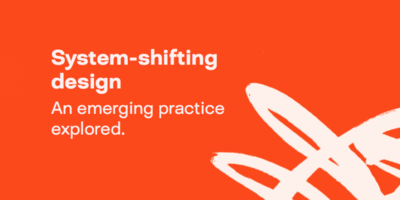The Design Economy 2018 – City ID

As part of our flagship Design Economy 2018 research, we present seven case studies, which bring to life how a selection of different firms use design in practice. For an introduction to the case studies, please see here.
City ID – Creating a market for UK design in the built environment
City ID is a city information, urban and wayfinding design company based in Bristol. The firm applies visual design and service design techniques to develop physical products and design solutions in the urban environment. City ID is currently collaborating with University of the West of England on a Knowledge Transfer Partnership (KTP) which is bringing in specific knowledge and experience around digital and gaming technology to explore the opportunities around utilising digital technology in wayfinding.
Location: Bristol, New York and San Francisco
Size: 18 staff members (16.6 FTE) between Bristol, New York and satellite office in San Francisco
Design discipline: City information, urban and wayfinding design.
How design is used to enhance business innovation
City ID focuses specifically on how people experience and understand place and how they navigate their way through it. The visible output of this is physical products such as maps, signage and information boards. However, their approach draws on service design to weave the different city agendas together to build a sense of place.
“We operate from the idea that you can weave together different disciplines around one vision – one that promotes improved experience. Greater levels of accessibility, greater levels of play in the environment and interest in the environment have all got to be good.”
They have a set of tools which they combine in different ways depending on the needs of a project. Most projects contain the following elements:
- Research. The team undertakes extensive on-site research which includes community workshops, walking audits with local residents, and information gathering. This process forms the basis for the team’s understanding of the place.
- Stakeholder workshops. Bringing together different parts of the city authority and other important stakeholders and organisations to interrogate research, develop ideas and create a shared vision.
- Iterative design. Drawing on the research, the City ID designers develop visuals which are rapidly tested and re-tested with stakeholders and the community. Designs are iterated and adapted accordingly.
- Building organisational capacity. City ID have identified that to have a lasting impact, a key component of the work is developing capacity in the client organisations to take the work forward once the initial project is over.
- Project ‘advocacy’. City ID encourages clients to build advocacy into projects. This includes publications to communicate the project to city stakeholders and help them to organise around an idea.
What impact has this made?
City ID applies design tools and thinking to key urban challenges. At a basic level, City ID’s work aims to make cities easier to navigate, but the real impact of their approach is apparent when considering the potential impact of getting more people to travel and explore a city by foot. Applying design to the city context is an opportunity to improve health, transport, community culture and tourism outcomes – building more vibrant places.
City ID has created a new market for design in the UK and internationally. City ID’s first project in Bristol in the late 1990s was pioneering in applying design to wayfinding at scale in a city. According to City ID, it was one of the first projects to use graphic designers in the urban environment and to employ ‘heads up’ mapping.
“Many countries still look to the UK for design expertise and talent.”
Want to know the full story? We’ve published our complete case study about how and why City ID uses design here.
Subscribe to our newsletter
Want to keep up with the latest from the Design Council?

